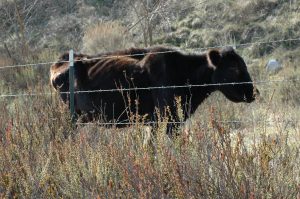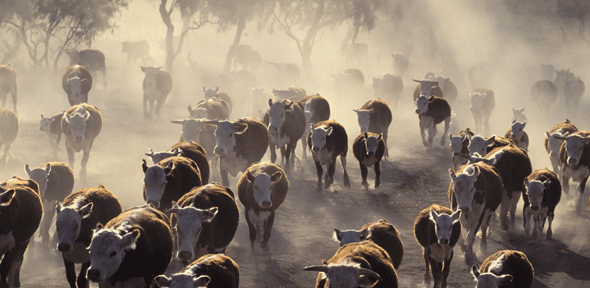Thanks to Dan Flynn and Food Safety News for highlighting the likely causes of three E. Coli 0157:H7 outbreaks in romaine lettuce in 2019. These contamination episodes sickened at least 188 people.
According to the Food and Drug Administration (FDA), cattle fecal matter from nearby feedlots caused all three of the 2019 E. Coli O157:H7 disease outbreaks. Flynn reminds readers that —
“That [FDA] conclusion was nothing new. In 2018, romaine contaminated with E. Coli O157:H7 was grown in the Yuma, AZ, region. A large feedlot adjacent to an irrigation canal used to water lettuce was the suspected source.”
We covered the 2018 outbreaks when they happened, and the story is very similar. There is something wrong and tragic about problems allowed to arise again and again, when it has been abundantly clear all along re how to prevent recurrences.
Flynn’s July 7, 2020 piece describes several commonsense ways that clearly would reduce the risk of future outbreaks, including several suggestions offered by Sandra Eskin, the Director of The Pew Charitable Trusts’ work on food safety.

In a recent piece, Eskin lays out several observations and preventive steps that include —
“…allowing cattle to graze near fields that grow romaine lettuce or other leafy greens creates an unacceptable risk to the health of consumers, who often eat these foods raw.”
Preventive steps should include the need to manage “… nearby land uses, and create buffer zones between fields and grazing lands, as well as physical barriers to divert water runoff away from crops.”
“The solution to a complex problem like this one requires a multidimensional approach…State and local authorities have jurisdiction over land use, whether for cattle grazing or other activities. That’s why agencies at those levels need to consider adjacent land use when allowing cattle to graze on a particular property and put in place appropriate requirements and restrictions.”
The 2006 Spinach Outbreak in Salinas
Back in the day, I did extensive research on the 2006 Earthbound Farm spinach outbreak on the Paicines Ranch in California. Based on my work and many meetings with Earthbound Farm scientists, advisers, and managers, here is what I believe happened (click here to see the Organic Center report that emerged from this research).
Just upwind from the spinach block that had become heavily contaminated with E. Coli O157:H7, there was a several-hundred acre cattle pasture.
In the corner of this fenced pasture, there was a set of troughs to water the grass-fed beef, a line of shade trees, and salt blocks. The cattle often congregated in this corner of the pasture. As a result, there were hundreds of dried manure patties in this area.
The corner of the pasture also had a gate. People going on horseback rides or driving farm equipment or 4-wheelers moved through the gate and traversed this area, stirring up dust. During the hot and dry spell that August, conditions and timing were just “right” to trigger what became a major public health debacle.
One afternoon, dust and dried manure blew off the pasture, and then onto the just irrigated spinach growing in the nearby field.

The blowing dust settled on the water on the spinach leaves, and adhered to the leaves as the water dried. Soon thereafter, a block of the spinach was harvested. It entered the processing plant so loaded with E. Coli that Earthbound’s triple-wash system could not get rid of all the bacteria.
And last, some of the cattle grazing that large pasture were in bad shape, no doubt from stress induced by the hot and dry summer. I know, because I happened to be visiting the site just weeks after the outbreak block was harvested. I watched as the cattle herd that had been in the pasture for awhile was moved onto another pasture.
It is widely known that stressed cows in poor health shed much higher levels of E. Coli.
A perfect storm triggered the 2006 Earthbound Farm E. Coli O157 outbreak. Fourteen years later, the FDA, the Pew Trust’s food safety program, and Food Safety News are beginning to zero in on why. Better late than never.
P.S. – In case you don’t get the title reference, we highly recommend a listen to this beautiful classic!
Source:
Sandra Eskin; “FDA Says Cattle Likely Source of E. Coli That Contaminated Romaine in 2019;” Pew Charitable Trust; Date Published: July 2, 2020, Date Accessed: July 8, 2020.
Dan Flynn, “Pew’s Eskin suggests ways to reduce romaine risk from surrounding threats;” Food Safety News; Date Published: July 7, 2020, Date Accessed: July 8, 2020.

